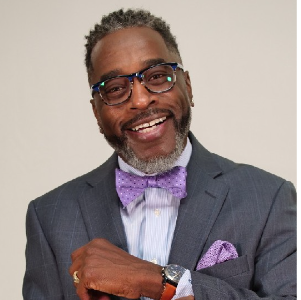On March 7th, Existential Humanist NW hosted its first ever Case Conceptualization Salon. The event was an informal conversation, hosted by Bob Edelstein, our president and founder. To preface the conceptualization, Bob led us through his own process and views toward conceptualizing a client, and how this looks, for him, from an EH perspective.
Firstly, Bob emphasized the nature of there being no one EH approach. Rather, how each of us conceptualizes varies because we vary as therapists, and as humans. Conceptualization involves being open to how each unique person exists in the world, and honors those differences. As such, this process will look differently for each of us.
Bob also spoke to the importance of conceptualizing lightly. This is because the emphasis is put on openness to another individual’s human experience, rather than on any agenda. One participant spoke of this as viewing the process as being like being a “stranger in a strange land”. Another used the analogy of swimming with the client, rather than looking upon them from the shore.
One major theme of this practice for Bob is having an ear toward existential themes, which he described as general ways of being—what one is manifesting, and how a person engages with what is present right now. An existential theme may be a tendency toward, for example, being personable. This is neither good nor bad. On a positive side of things, this may be a pleasant way to go through the world. Perhaps a person is very connection-oriented. Alternatively, a person may worry about taking care of others, neglecting their own selves.
Another aspect of conceptualization that Bob exemplified was looking for how a person engages or resists their subjective centering. This could look like one’s relationship with the here and now, or their relationship with oneself, their therapist, and life itself. A therapist may focus on how a person accesses their own inner experience, and what goes into their inner life.
Within this is the supposition that through more deeply accessing these aspects of our consciousness, we move into deeper relationship with everything. Embedded in this is also the notion that we are always with these aspects of ourselves, yet for various reasons, we may stay at the surface—to keep ourselves safe, because of our unique life experiences, to keep moving. Yet there is always more, always something below the surface. In therapy, a client may be reporting something. A therapist may seek what is beyond the reporting.
An EH approach to conceptualizing is also about looking at the relationship between therapist and client. How conscious is the client to that relationship? And what gets in the way of deeper authenticity between them? Bringing it back the idea of a person being very personable and ingratiating, the question may be asked—does this feel real? And what is being missed here? How can I support a relationship in which one can risk not always feeling so safe?
The last tenet Bob mentioned was a humanistic one—the belief in each person’s ability to move toward health and wholeness. This is a philosophical tenet. Existential pain so often concerns agency—a person’s own sense that they have choice in their way of being. Therapy often includes identifying where a person is making these shifts.
Rogers spoke of empathy as “acting as if”, because it is when we think we know that we become arrogant. How would anyone know what it was like to be another person? And if you’d walked through their experience, how do you know you’d have done it any differently?
In all these ways, the goal of an EH therapists is to be without pretense, to be authentic and vulnerable in service of cultivating a real relationship. A therapist might choose to share aspects of their own life experience. This is a judgment call based within each individual relationship, yet can be central to facilitating true intimacy and genuineness.
Ultimately, it is important to remember, when sitting with someone, that we are all in the same soup. The work of a therapist, and especially from an EH perspective, is not to take away pain and suffering, but it is rather to join someone in their human condition. Bringing it back to the philosophical tenets of Existential Humanist therapy, there is always an emphasis on cultivating I/thou relationships. Bearing this in mind, we are all conditioned, in various ways, toward relationships predicated on I/it. As Bob put it, “part of what clients give me is their livelihood, and I can help them grow”.
In cultivating I/thou relationships, the process moves beyond outcomes and goals toward facilitating a space for agency and choice. One person may be in therapy for years and not change much at all. Another person may be in therapy for a year and change dramatically. This doesn’t matter. We are all fellow travelers. But how the therapy process develops, ideally, is helping to open a person up to their life in general.
As therapists, we do this through mirroring. We do this through reflecting. We do this through focusing. The thoughts and feelings a person brings into the room relate to their concerns. What we all share is that we all are in this human experience. We all grapple with anxiety. As Yalom put it, “each client is a different therapy”.
-Gemma Baumer




